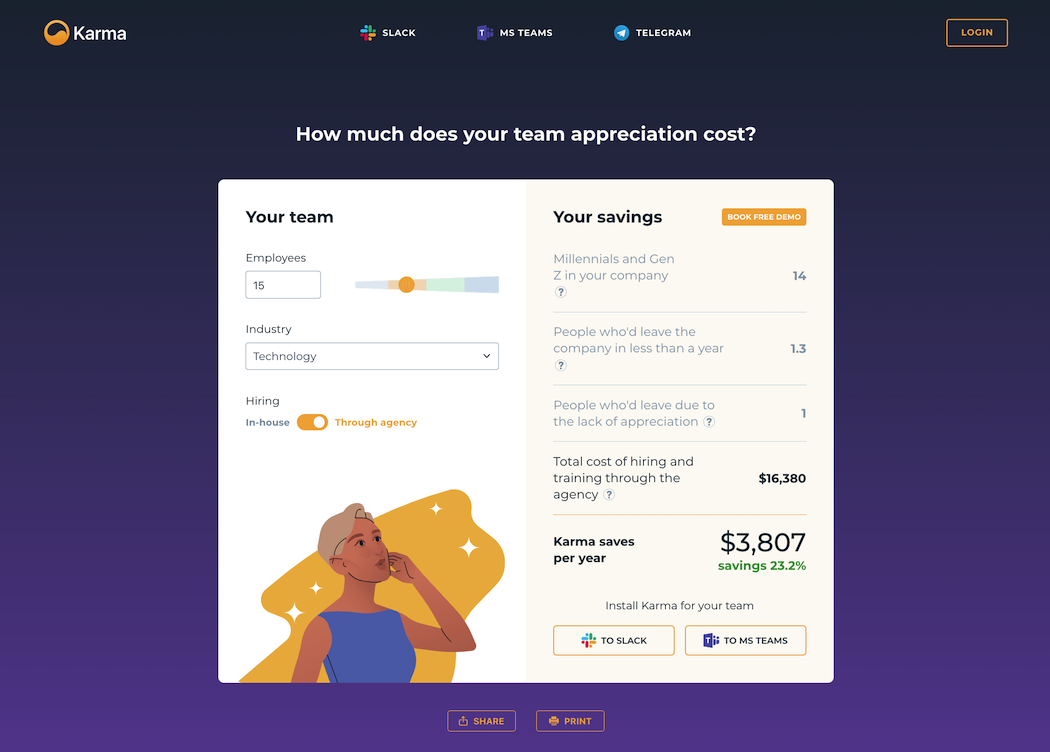In the fast-paced and competitive business world, it’s easy to get caught up in chasing numbers, meeting deadlines, and staying ahead of competitors. However, beneath the surface of spreadsheets and quarterly reports lies a critical component of success that is often overlooked: employee appreciation. Failing to recognize and appreciate employees doesn’t just lead to disengagement or low morale—it also has serious financial and cultural repercussions for organizations.
In this article, we’ll explore the hidden costs of ignoring employee appreciation, backed by real data, and offer actionable insights to show why prioritizing recognition is one of the smartest investments any company can make.
The Domino Effect of Ignored Effort
The importance of feeling appreciated at work cannot be overstated. A lack of recognition can quickly snowball into widespread issues that affect productivity, retention, and the company’s overall reputation. For example, Gallup reports that disengaged employees cost businesses a staggering $450–$550 billion annually in lost productivity. Beyond absenteeism, disengaged employees are 37% more likely to take sick days and 60% more likely to make costly mistakes on the job.
The financial burden doesn’t stop there. Disengaged employees often influence their coworkers, creating a ripple effect across teams. In a 2022 study by SHRM, 79% of employees who quit their jobs said they left because they didn’t feel valued. This exodus means higher turnover rates, increased hiring costs, and a loss of institutional knowledge—all of which can be avoided with simple, consistent employee appreciation practices.
The Financial Impact of Turnover
Employee turnover is one of the most obvious hidden costs of ignoring appreciation. Every time a valued team member leaves, companies face steep replacement costs. Estimates suggest that replacing an employee costs 50%–200% of their annual salary when factoring in recruitment expenses, onboarding, and lost productivity.
Consider the example of Ikea. A few years ago, the global retailer faced an annual turnover rate of 22.4%, with some locations peaking as high as 41%. High turnover was driving up recruitment costs, disrupting workflows, and creating stress for remaining employees. To address the problem, Ikea introduced changes like better pay, employee feedback programs, and a buddy system for new hires. These efforts reduced turnover to 27% within two years, saving millions in recruitment and training expenses.
Employee Appreciation: A Proven Productivity Booster
Recognizing employees is not just about improving morale—it directly impacts productivity. Organizations with engaged employees report 21% higher profitability and 17% better productivity, according to Gallup. These numbers make it clear that fostering a culture of recognition isn’t just a feel-good initiative; it’s a business imperative.
Let’s consider an example. JetBlue Airlines implemented a peer-to-peer recognition program called “Lift,” where employees could reward each other with points for exemplary performance. These points could then be redeemed for various perks. This initiative not only increased employee satisfaction but also improved the airline’s operational efficiency. Employees felt motivated to go the extra mile, resulting in better customer service ratings and reduced absenteeism.
The ROI of Recognition Programs
Modern recognition programs have revolutionized how companies acknowledge and reward their employees. Platforms like Karma offer innovative tools to celebrate accomplishments, encourage peer-to-peer recognition, and measure the tangible benefits of these efforts.
By fostering a culture of appreciation, businesses can achieve significant cost savings. For example, Karma’s ROI calculator estimates that a company with 100 employees could save around $38,000 annually by reducing turnover through consistent recognition. These savings are driven by lower recruitment expenses, reduced absenteeism, and improved productivity—demonstrating how prioritizing employee appreciation is both impactful and cost-effective.

Moreover, companies that prioritize recognition see 31% lower voluntary turnover rates. Retaining experienced employees minimizes the time and resources spent on hiring and onboarding replacements, making recognition programs a win-win for both the workforce and the bottom line.
Real-World Examples of the Power of Recognition
-
Google
Google has long been recognized as a leader in employee engagement and appreciation. Its peer recognition program, “gThanks,” allows employees to publicly recognize their colleagues for great work through a dedicated platform. Google also offers various awards and incentives, such as spot bonuses for exceptional contributions. This recognition culture is part of what keeps Google ranked among the top employers globally, with a retention rate that far surpasses industry averages. -
Salesforce
Salesforce takes employee appreciation to the next level with its V2MOM (Vision, Values, Methods, Obstacles, and Measures) program. It encourages managers to align employees’ work with the company’s broader goals, offering recognition for contributions that drive success. This creates a sense of purpose for employees, motivating them to stay engaged and productive. Salesforce also uses technology to send personalized thank-you notes or rewards to team members, which has helped the company maintain high levels of employee satisfaction and retention.
A Culture of Recognition Enhances Innovation
When employees feel valued, they’re more likely to contribute innovative ideas and solutions. A recent study by the O.C. Tanner Institute found that 90% of employees who feel appreciated say they’re more motivated to innovate. On the other hand, unappreciated employees often feel disheartened, leading to fewer creative contributions and reduced collaboration.
Imagine this scenario: an unappreciated software engineer withholds an idea that could have streamlined processes for an entire team because they don’t believe their contributions are valued. Over time, these missed opportunities add up, impacting the company’s ability to stay competitive. By creating a culture of appreciation, companies can unlock the full potential of their workforce.
Practical Tips for Recognizing Employees
-
Be Consistent: Recognition should happen regularly, not just during annual reviews or company events. Set up systems that ensure ongoing appreciation, such as weekly shoutouts in team meetings or monthly awards.
-
Make It Personal: Generic praise can feel insincere. Tailor recognition to the individual’s achievements and preferences—for example, some may prefer public acknowledgment, while others may appreciate a handwritten thank-you note.
-
Tie Recognition to Impact: When appreciating employees, connect their efforts to the company’s broader goals. For example, “Your contributions to the marketing campaign increased lead generation by 20%, which significantly supports our growth strategy.”
-
Encourage Peer-to-Peer Recognition: Appreciation shouldn’t just come from managers. Foster a culture where employees celebrate each other’s contributions using recognition tools. Peer recognition creates a sense of camaraderie and mutual respect.
Conclusion: A Win-Win for Everyone
The costs of ignoring employee appreciation are too significant to overlook—both in terms of finances and company culture. Turnover, disengagement, absenteeism, and lost innovation all take a toll. However, the good news is that addressing these issues is straightforward: foster a culture of appreciation.
Recognition programs like Karma provide a scalable, effective way to celebrate employee achievements and track their impact. By investing in these initiatives, companies stand to gain not only financially but also in terms of morale, innovation, and long-term growth.
The bottom line is clear: when you show employees they matter, they’ll return the favor in productivity, loyalty, and success. As the saying goes, “Take care of your employees, and they’ll take care of your business.”
Try out Karma for Slack with our demo and subscribe to your 30-day free trial:


 How to Use Recognition to Drive Innovation and Creativity
How to Use Recognition to Drive Innovation and Creativity